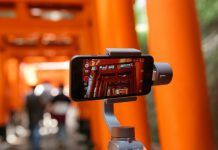A restaurant’s atmosphere often determines whether a first-time visitor becomes a loyal customer. Beyond great food and service, the visual experience, how menus, displays, and interiors communicate, plays a decisive role in shaping perception and driving engagement. In an era where digital experiences meet physical spaces, smart visual design transforms a dining spot from ordinary to unforgettable. One of the most powerful yet underused tools in this transformation is the RSS approach to digital signage—an adaptable way of bringing live, relevant content into the dining experience.
The Power of Visual Storytelling in Modern Dining
Restaurants today compete not just on flavor but on experience. From the moment customers walk in, they are absorbing a narrative—told through lighting, layout, menu design, and digital displays. This is where visual storytelling becomes central. A well-designed environment can evoke emotion, communicate brand values, and influence how customers order and remember their visit.
Digital menu boards, for example, bridge creativity and practicality. They offer the flexibility to update specials instantly, showcase new dishes in vivid detail, and align the visual tone with the restaurant’s identity. When paired with smart systems like RSS-driven content feeds, these boards can dynamically display promotions, local events, or live reviews—all while maintaining aesthetic harmony.
Beyond Static Displays: The Rise of Dynamic Design
Static posters and printed menus once defined the restaurant experience, but those days are fading. Today’s diners expect more. They are drawn to motion, freshness, and real-time relevance. This is why digital transformation in hospitality hinges on adaptability.
With RSS-based solutions, restaurant owners can curate an ongoing flow of content, such as featured dishes, chef highlights, or even trending food videos, without manually updating every screen. This kind of visual agility ensures the environment always feels alive and current. It’s about delivering an experience that matches the pace of modern life, where people expect information and visuals to be both instant and engaging.
Designing for Emotion and Engagement
Every design choice inside a restaurant should elicit an emotional response. Warm tones encourage comfort, while high-contrast imagery draws attention to featured items. Strategic placement of digital menu boards ensures that customers naturally notice key messages without feeling overwhelmed.
Effective design doesn’t just inform; it connects. A short animation of a sizzling burger or the pour of a signature drink can turn a casual glance into an order. When these visuals are updated via RSS-powered systems, they remain timely and relevant, enabling the restaurant to adapt instantly to changing trends and customer behavior.
The Role of Technology in Consistent Brand Experience
One challenge restaurants face is maintaining a cohesive look across all their locations and digital platforms. Smart visual systems solve this by automatically synchronizing content updates. Whether via an internal server or cloud-based software, digital displays can pull updates via RSS feeds and distribute them across all screens, ensuring brand consistency with minimal effort.
This level of control extends beyond visuals. It reinforces the restaurant’s personality—be it casual and playful or upscale and refined. Customers subconsciously recognize this cohesion, associating it with professionalism and trust.
Integrating Design with Data
Smart visual design doesn’t stop at aesthetics. It can also gather insights. Digital systems track which menu items are most viewed, when engagement peaks, and which promotions drive the most sales. Combined with an RSS-based content management structure, this data can automatically influence what appears next on-screen, creating a cycle of improvement.
For instance, if analytics show that dessert sales spike after showcasing a short clip of a molten chocolate cake, the system can schedule similar visuals during high-traffic hours. This kind of data-driven design ensures that creative efforts always align with measurable results.
Transforming Customer Perception Through Innovation
A well-designed restaurant environment creates memory. Guests might forget the price of their meal, but they’ll remember the feeling of dining there—the colors, the motion, the sense of freshness. When visuals shift dynamically and reflect real-time updates through tools like RSS integration, the experience feels alive.
This technology empowers small and large establishments alike to stand out in a crowded market. Instead of relying on printed posters or manually updated boards, restaurants can embrace a smarter, faster system that keeps their presentation as fresh as their menu.
Bringing It All Together
Visual design in restaurants is no longer just about decoration—it’s a strategic tool for engagement. With the right blend of design thinking, technology, and storytelling, any dining space can evolve into an immersive experience that captivates customers and strengthens brand loyalty.
Using innovative tools like RSS-driven digital menu systems, restaurants can ensure their visuals stay current, cohesive, and compelling. It’s not just about displaying a menu—it’s about creating a visual rhythm that draws people in and keeps them coming back.
When design meets technology, the result is more than just a good presentation. It’s a complete sensory experience that defines the restaurant’s identity, boosts visibility, and deepens customer connection—turning every meal into a memorable story.








